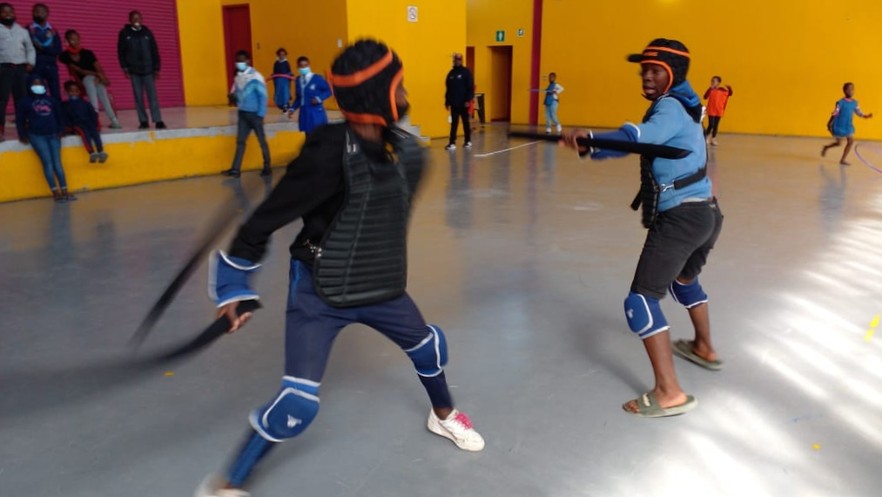
26 September 2023
Children in Weltevreden Valley Hall in Cape Town play iintonga. Iintonga is a stick fighting game made popular by boys herding livestock. It is played by two people armed with two long sticks, one for attack and one for defence. The players hit each other with the sticks until one surrenders. This game is still used to settle disputes and grudges between two men or boys. Photos: Qaqamba Falithenjwa
About 100 children from Samora Machel, Philippi, in Cape Town gathered over the Heritage Day weekend to play traditional games such as morabaraba, iintonga, ncuva and dibeke.
Coach Neo Mbongo said the indigenous games reminded children of their culture “and who they are”. He said often when children went from Cape Town to the Eastern Cape and were given iintonga (sticks) to play with, “they wouldn’t even know what to do with them”.
Morabaraba is played by two players, each of whom gets 12 tokens, also known as “cows”. Each player tries to get three cows in a row on the board. The player who fills a row can remove one of the opponent’s cows. The goal is to remove as many of the other player’s cows as possible. According to some, the game originated about 800 years ago and is played throughout Africa and Asia.
Dibeke is a kick and run ball game played by two teams of six players each. Each team must have an equal representation of male and female players. The attacking team tries to kick the ball away from the defenders, while the defenders try to get the ball away using their hands. The attackers score when they have moved the ball down the entire length of the field. The game is called dibeke (weeks) because young children used to play this game week-in and week-out.
Ncuva is played by two players using 187 marbles or pebbles on a board with 48 holes. To start the game, a player moves any four marbles anticlockwise from their holes to the next four holes, placing them opposite the opponent’s marbles. The aim of the game is to capture as many marbles before your opponent captures yours.The game was originally played by men or boys to while away time in the grazing fields.